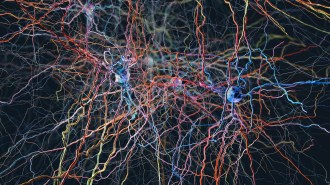Brain’s adult stem cells born early
Understanding their origin boosts chance of exploiting damage-repair candidates

EARLY ON In mice, many cells that go on to become adult neural stem cells (yellow) are born around embryonic day 14.5 (middle panel). Fewer are born on embryonic day 12.5 (left panel) and day 18.5 (right panel).
L.C. Fuentealba et al/Cell 2015






